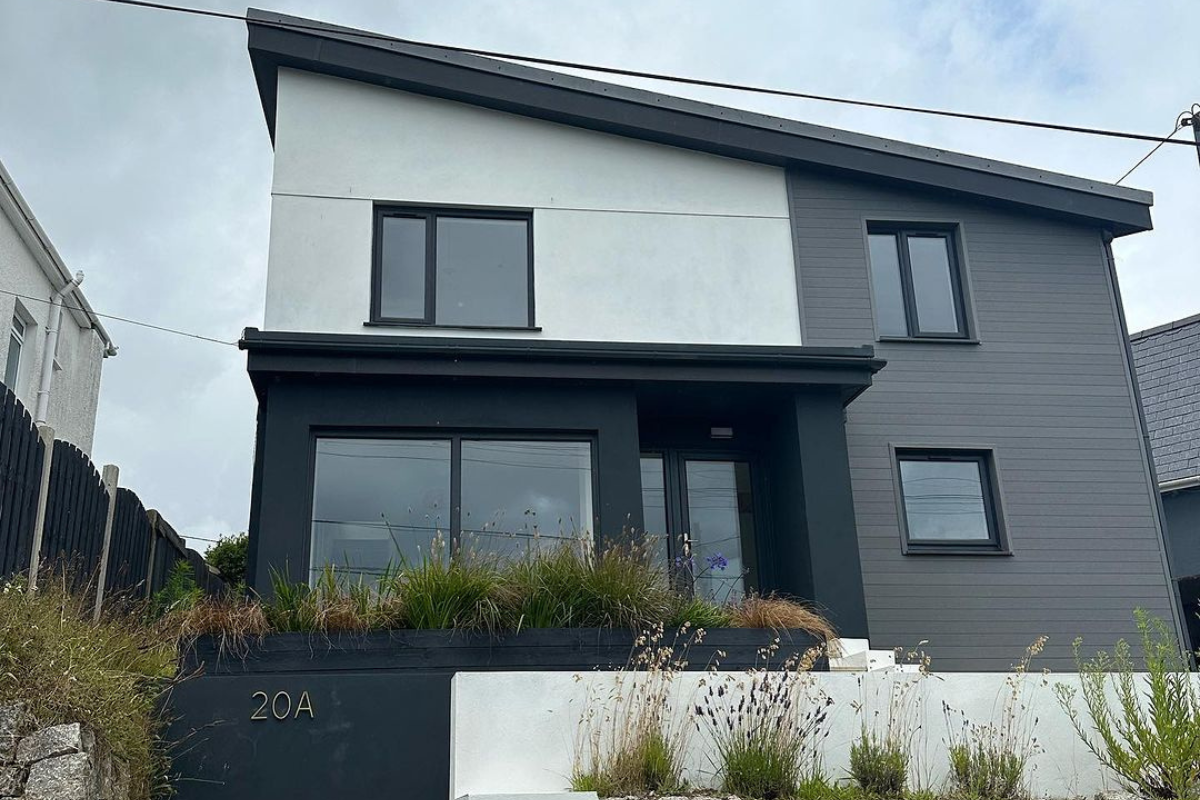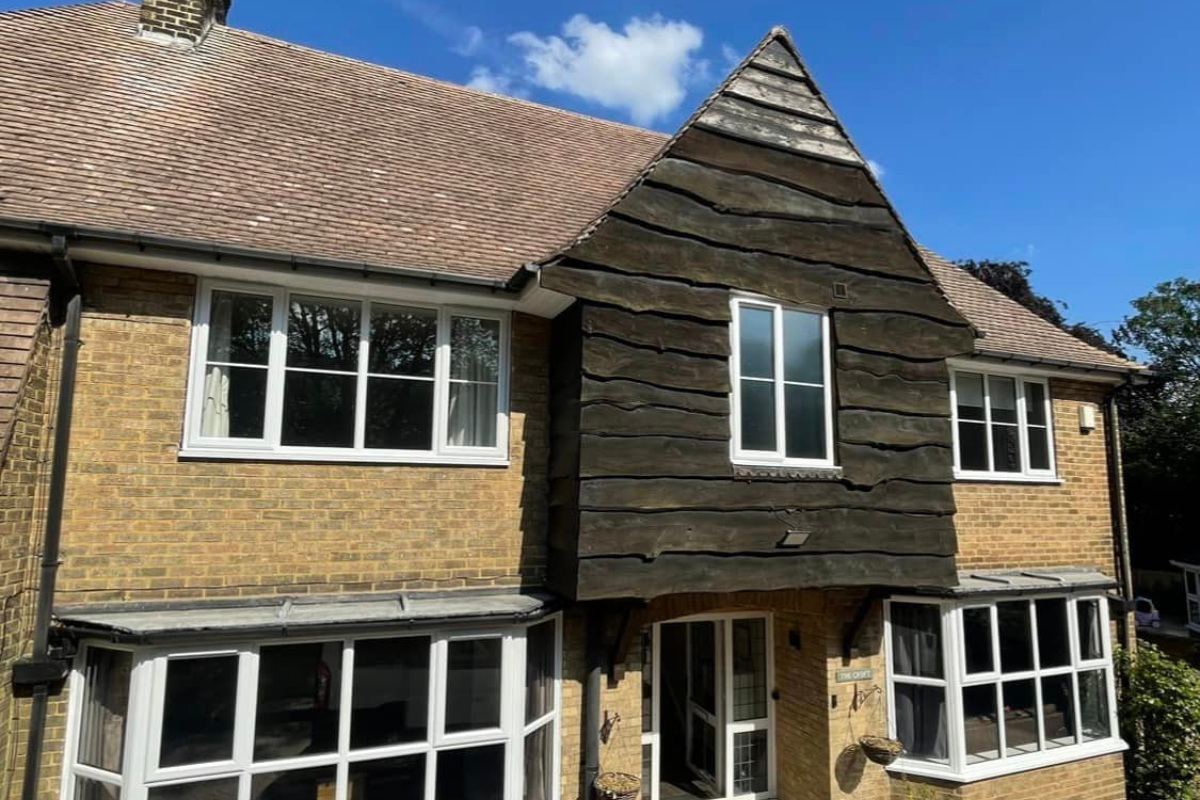How to Choose the Right Exterior Cladding for Your Dream Project
Exterior cladding plays a crucial role in protecting buildings while enhancing their look. It serves as the outermost layer of a structure, shielding it from the elements and improving thermal insulation. Whether for a new build or a renovation, the right cladding can improve insulation, increase durability, and boost kerb appeal. Choosing the right material for exterior cladding is essential, as it influences not only the visual appeal of your property but also its maintenance requirements, energy efficiency, and longevity. Sustainability and long-term performance are key considerations for UK homeowners when selecting cladding. In this guide, we will explore the most popular exterior cladding materials available in the UK, including stone, timber, uPVC, and composite cladding. We will also explain why composite cladding stands out as the best option for modern homes.

Types of Cladding Available in the UK
1. Stone Exterior Cladding
- Long lifespan with exceptional durability.
- Excellent weather resistance, making it ideal for the UK’s changing climate.
- Premium, classic appearance that can add value to a property.
- High initial cost due to material and installation expenses.
- Heavy material, requiring professional installation.
- Limited design flexibility compared to modern materials.

2. Timber Exterior Cladding
- A sustainable option when sourced responsibly.
- Attractive and versatile, it is available in a range of finishes and stains.
- Natural insulation properties help regulate indoor temperature.
- Requires regular maintenance, including staining and sealing.
- Prone to rot, warping, and pest infestations if not properly treated.
- Can be expensive depending on the type of wood chosen.

3. uPVC Exterior Cladding
- Lightweight and easy to install.
- Water-resistant and does not require painting or staining.
- Affordable compared to other cladding materials.
- Less visually appealing than natural materials like wood and stone.
- Prone to discolouration over time due to UV exposure.
- Less eco-friendly than other options due to its plastic composition.

4. Composite Exterior Cladding
- Highly durable and resistant to weather, rot, and pests.
- Low maintenance, requiring no painting or staining.
- Available in a variety of styles, including finishes that resemble exterior cladding wood.
- Eco-friendly, as it is made from recycled materials.
- Provides excellent exterior cladding insulation, improving energy efficiency.
- Higher initial cost compared to uPVC.
- Requires professional installation for the best results.

What is the Best Exterior Wall Cladding?
When considering the various cladding options available, composite exterior cladding emerges as the best choice for UK homeowners. It offers the perfect blend of good looks, durability, and sustainability, making it a superior option to traditional materials such as stone, timber, and uPVC.

- Long-lasting and Low Maintenance: Unlike wood, composite cladding does not require regular staining, painting, or sealing. It is designed to withstand the harsh British weather without warping, rotting, or cracking. This makes it a hassle-free choice for homeowners looking for durability and longevity.
- Enhanced Weather Resistance: The UK climate is known for its unpredictable weather conditions, from heavy rainfall to extreme temperature fluctuations. Composite cladding is built to resist moisture, UV rays, and temperature changes, ensuring that it maintains its appearance and structural integrity over time.
- Aesthetic Versatility: Composite exterior cladding is available in a variety of colours, textures, and styles, allowing homeowners to achieve the desired look for their property. Whether you prefer a modern finish or a traditional timber appearance, composite cladding provides multiple design options to suit your preferences.
- Eco-Friendly and Sustainable: With sustainability becoming an increasing priority, composite cladding is an environmentally responsible choice. Unlike uPVC it is made from recycled wood fibres and plastics, it reduces the demand for virgin timber and helps minimise waste. Many composite cladding brands also prioritise sustainable manufacturing practices, further reducing their environmental impact.
- Improved Insulation and Energy Efficiency: One of the key advantages of composite cladding is its ability to enhance a home’s insulation. By reducing heat loss, it contributes to better energy efficiency, leading to lower heating costs during winter. This makes composite cladding a smart choice for homeowners looking to reduce their energy bills while maintaining a comfortable indoor temperature.
- Cost-Effective in the Long Run: While the initial cost of composite cladding may be higher than some other materials, such as wood, its durability and low maintenance requirements make it a cost-effective investment over time. Homeowners can save on maintenance, repairs, and replacements, making composite cladding a financially sound choice.

Choose EnviroBuild for Composite Cladding
- It is made from 90% recycled materials, reducing our environmental impact.
- Superior weather resistance, ensuring long-term performance in the UK climate.
- Available in a wide range of browns and greys to suit any modern and traditional architectural style.
- Our cladding is low maintenance, requiring no painting, staining, or sealing.
- Designed for quick and easy installation.

